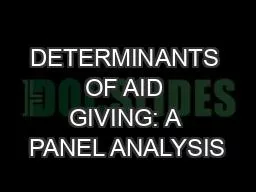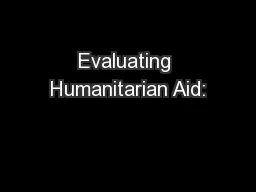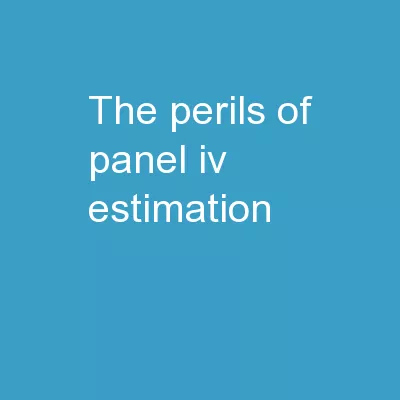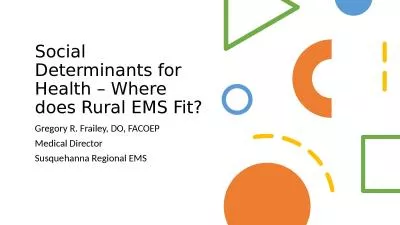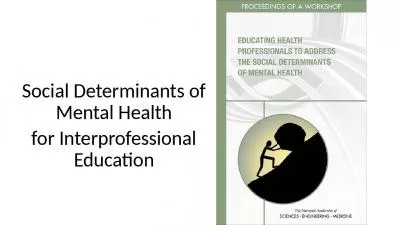PPT-DETERMINANTS OF AID GIVING: A PANEL ANALYSIS
Author : shoulderheinz | Published Date : 2020-07-01
ARNAB ACHARYA MELISA MARTINEZ ALVAREZ JOSEPHINE BORGHI LEONDARO Arregoces and CATHARINE pitt Work in Progress Tlaxcala mexico THIS PRSENTATION INTRODUCTION
Presentation Embed Code
Download Presentation
Download Presentation The PPT/PDF document "DETERMINANTS OF AID GIVING: A PANEL ANAL..." is the property of its rightful owner. Permission is granted to download and print the materials on this website for personal, non-commercial use only, and to display it on your personal computer provided you do not modify the materials and that you retain all copyright notices contained in the materials. By downloading content from our website, you accept the terms of this agreement.
DETERMINANTS OF AID GIVING: A PANEL ANALYSIS: Transcript
Download Rules Of Document
"DETERMINANTS OF AID GIVING: A PANEL ANALYSIS"The content belongs to its owner. You may download and print it for personal use, without modification, and keep all copyright notices. By downloading, you agree to these terms.
Related Documents

